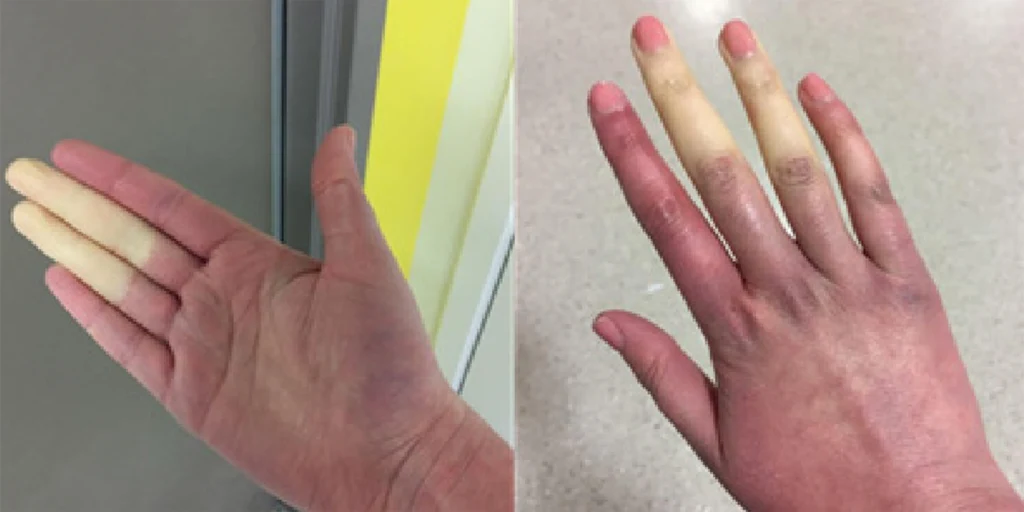When it becomes terribly cold, millions of people react in the same manner. The color of their extremities changes.
During the icy winter months, your skin’s color might change at the farthest reaches of your body, from your fingers to your toes. You may have worried about it once, just like I did. However, you simply accept it after you become used to it.
In actuality, millions of people suffer from a sickness that causes the color to change from your typical hue to a crimson red or a faint white.

That is the opinion of one physician who has described the condition and the things you should know if you have it.
It manifests when your extremities go cold and is known as Raynaud’s disease or Raynaud’s phenomenon. And that’s typically quite cold, not mildly cold.
“The average person can go into chilly weather and get by without gloves, their fingers would just get a bit cold,” Melisa Lai Becker, MD, told Good Morning America.
However, Raynaud’s is different. The temperature changes along with the color.
“If you touch their hands, you can tell the difference,” stated Dr. Lai Becker. “Even in a moderately cold environment, they have white, ice-cold hands.”
The NHS states that Raynaud’s phenomenon occurs when blood flow to the fingers and toes becomes improper. It is frequent and typically does not result in serious issues.

Raynaud’s disease symptoms
According to the NHS, Raynaud’s disease has an impact on blood circulation.
“When you’re cold, anxious or stressed, your fingers and toes may change colour,” the health service explains.
Additional symptoms may include pins and needles, numbness in the affected area, and discomfort in your fingers or toes.
Some persons experience the aforementioned sensations in other areas of their body, such as their nose, ears, lips, and nipples, at the same time.
Seeing a doctor
Raynaud’s disease symptoms may manifest spontaneously or over the course of many hours. They may also show up alone or in combination.
In the event that the pain becomes so severe that it interferes with your ability to perform daily duties, Dr. Lai Becker advises consulting a physician.
It can occasionally be brought on by another medical condition or the usage of specific medications, which your doctor can investigate for you.
According to Dr. Lai Becker, Raynaud’s disease is “overwhelmingly more common with women and generally first discovered in adolescence.” Reynaud’s syndrome affects up to 20% of adults worldwide.
